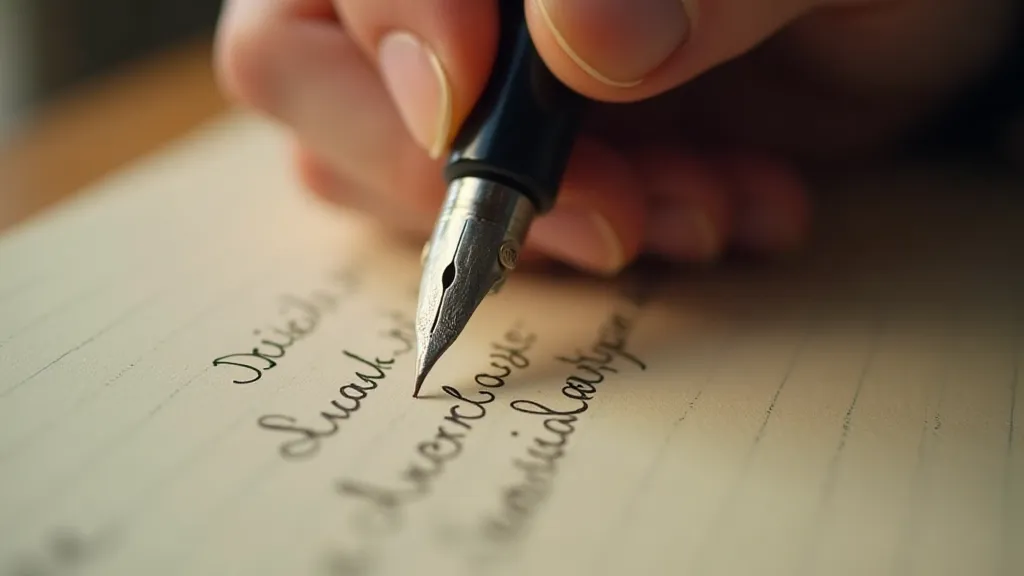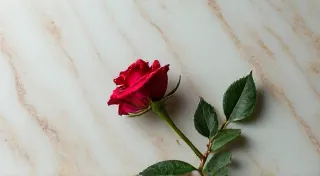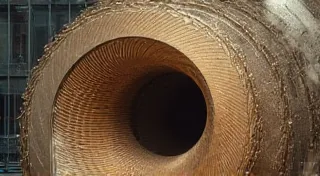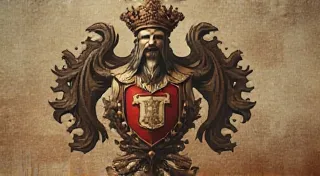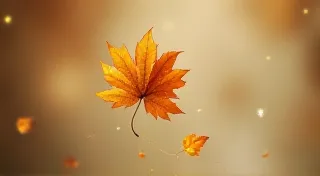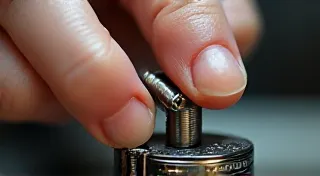The Curator’s Whisper: Unearthing Stories from Archived Pen Collections
There's a particular hush that falls when you open a box of antique pens. It’s not the silence of emptiness, but the quiet anticipation of a thousand untold stories. As a curator specializing in vintage writing instruments, I'm not merely cataloging objects; I’m piecing together fragments of lives, glimpsing moments etched in time, all through the elegant curve of a nib and the weight of a well-crafted barrel. The process of archiving these collections isn't just about preservation; it’s about listening to the curator’s whisper, the faint echo of the past that lingers in these remarkable objects.
My journey into this world began unexpectedly. I inherited my grandfather's modest collection – mostly utilitarian fountain pens from the mid-20th century, but amidst them, a single, unassuming Parker Duofold. It wasn’t the rarest model, nor the most exquisite, but the feel of it in my hand, the subtle click of the filling lever, sparked a fascination that has grown into a lifelong pursuit. He’s gone now, but holding that pen, I feel a tangible connection to him, a whisper of his daily routines, his thoughts, and his world.
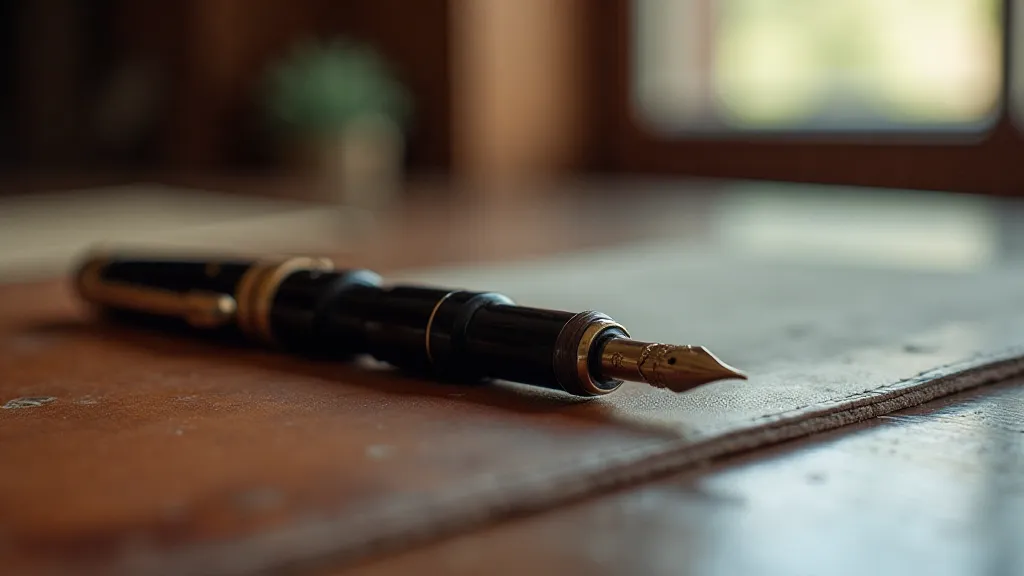
The Archive: More Than Just Paperwork
Archiving antique pens isn's simply about listing brands and models. It’s a delicate process of documenting everything – the pen's condition, any markings or inscriptions, the type of filling mechanism, the material of the barrel and nib, and even the remnants of the original packaging. Each piece of information builds a more complete picture. Beyond the technical documentation, the most rewarding part is researching the pen's provenance. Where was it made? Who might have owned it? What role did it play in their life?
The initial assessment is crucial. Many pens arrive in a state of disrepair, suffering from dried ink, corroded parts, or simply decades of neglect. While restoration is a fascinating skill – I'm often called upon to gently clean and lubricate mechanisms – I prioritize preserving as much of the original character as possible. An overly pristine pen can lose its inherent story; the marks of time are often as revealing as the pen's original design.
Specific Antique Pen Brands: A Brief Survey
The world of antique pens is vast and varied. Let's briefly touch upon a few key players, each with its own unique history and appeal to collectors.
Waterman's: Founded in Paris in 1884, Waterman's quickly established itself as a leader in pen technology. Their early pens were known for their innovative filling mechanisms and elegant designs, often reflecting the Art Nouveau and Art Deco movements. A Waterman’s Ideal from the early 1900s is particularly sought after, not just for its beauty, but for its representation of an era of Parisian elegance and innovation.
Sheaffer: An American brand, Sheaffer, founded in 1908, rose to prominence with its reliable and accessible pens. They pioneered the lever-filling mechanism and later introduced the popular vacuum-filling system. A Sheaffer Lifetime from the 1930s, with its distinctive striped barrel, speaks volumes about the optimism and design sensibilities of the time. These pens were often gifted as prestigious awards or business tools.
Montblanc: The iconic Montblanc, founded in 1906 in Hamburg, Germany, began as a maker of practical pens for mountaineers. Their early pens were durable and reliable, reflecting the adventurous spirit of their target audience. The Meisterstück, introduced in 1924, quickly became a symbol of luxury and sophistication, and it remains one of the most desirable antique pens for collectors.
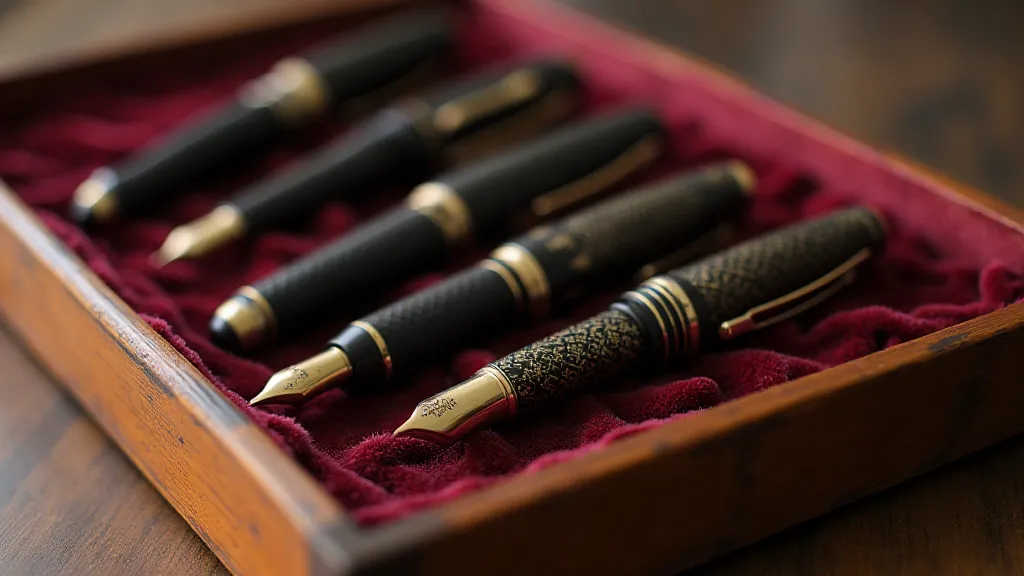
Lamy: This German brand, initially known for its steel nibs, began producing fountain pens in the 20th century and quickly developed a reputation for exceptional quality and innovative designs. The '92 series, introduced in 1969, remains a design icon, admired for its minimalist aesthetic.
Onoto: A British brand known for its robust designs and quality craftsmanship. Ontoto pens were a staple in British offices and schools for decades and are now highly collectible, especially their "Penguin" model.
Uncovering the Stories: Beyond the Brand
The true value of an antique pen collection isn't solely in its monetary worth, but in the narratives it holds. I'm often surprised by what I discover. A faint inscription on a barrel might reveal a romantic dedication, a child's name carefully etched into the metal, or a former owner's business affiliation. These subtle clues transform a simple writing instrument into a portal to the past.
One particularly memorable find was a Waterman's from the 1920s that had “Dr. Eleanor Vance, 1928” engraved on the cap. Further research revealed Dr. Vance was a pioneering female physician in rural Ohio, serving a community that was largely underserved. The pen likely accompanied her on her rounds, used to write prescriptions, record patient notes, and perhaps even pen letters to family and friends. Holding that pen, I felt a profound connection to her dedication and resilience.
Another fascinating discovery involved a Sheaffer from the 1950s found with a small envelope containing a series of handwritten poems. The poems, though amateurish, revealed a deeply sensitive and introspective individual – a glimpse into a world rarely seen.
The Future of Preservation & Collecting
The appreciation for antique pens is experiencing a resurgence, fueled by a growing desire for tangible connections in an increasingly digital world. The joy of writing with a well-crafted pen, the feel of the nib gliding across the paper, is a sensory experience that a computer simply cannot replicate.
For collectors, the pursuit of rare and unique pens is a rewarding endeavor, but it's crucial to approach it with respect and a commitment to preservation. Supporting ethical dealers, carefully researching provenance, and advocating for responsible restoration practices are all vital to ensuring that these remarkable objects continue to tell their stories for generations to come. Ultimately, these pens are more than just artifacts; they are whispers from the past, waiting to be heard. They represent a connection to human creativity, perseverance, and the enduring power of the written word.
